To an uninitiated American consumer, reading Italian wine labels can be a confusing endeavor, and its not just the absence of a grape name (although that is a biggie). At first blush, there appears to be no hierarchy of information. Which words are the producer’s name and which ones are the place of origin? What’s with this long string of words I don’t understand? Do I need a map in order to buy the right wine?
Here is the good news: while it might seem like Italian wine labels put up more barriers, they’re actually information-rich.
Let’s take a deep breath.
While it would be great if wine labels gave us all the answers we needed to make a proper purchase decision, that’s just not the case with any wine. But here is the good news: while it might seem like Italian wine labels put up more barriers, they’re actually information-rich. Memorize a few terms and — more importantly — why they’re being applied in their context, and you’ll feel more empowered to be curious with Italian wines.
I’ve spent more than a decade obsessing over the wines of Italy, and have come to look at the wine label as merely the establishment of expectations. Some words are interesting but offer nothing helpful (I point them out below). Yet a few terms are pivotal in helping to inform a bottle selection.
Before we get to them, I should note that — in terms of ferreting out quality — nothing is more important than producer reputation followed closely by the appellation’s reputation (see my item on DOC/DOCG/IGP below). This is where asking your wine merchant or sommelier for advise is handy.
How to Navigate This Guide
Desktop users can also use the sidebar navigation at left to jump ahead to specific terms.
- Useful Italian Wine Label Terms
- Merely Interesting Italian Wine Label Terms
- Bonus: Two Italian Wine Label Hacks
- All Italian Wine Label Terms (A to Z)
Useful Italian Wine Label Terms
Here are the essential terms you might find on an Italian wine label — the ones that inform my expectations of the wine to come. I’ve limited this to only terms you’ll find frequently on the bottle.
Have one I missed? Add it to the comments below.
Bianco, Rosso and Rosato
What does it mean? A white wine, a red wine or a rosé.
Will I notice it in the glass? Of course. This first one is easy!
Now that we have the obviousness out of the way, here come the caveats. Bianco and rosso often imply a blend of grapes, especially when they are used with a DOC appellation name. In recent years, I’ve found many of these blended wines to be among the most intriguing in Italy, particularly Collio Bianco DOC, Etna Bianco DOC, Etna Rosso DOC and Langhe Rosso DOC. It is possible in some circumstances that a bianco or rosso are varietal wines, but don’t get hung up on those details. Just Google the wine’s name and “tech sheet” to find out.
Rosato is fairly standard, but this being Italy, there are synonyms for rosé based on regional dialect. For instance:
- Chiaretto – “Pale.” Rosé from the Lake Garda area.
- Cerasuolo – Rosé from Abruzzo (however, Cerasuolo in Sicily is a red wine)
- Kretzer – Rosé term used sometimes in Alto Adige.
Finally, I should note that Italians label many of their macerated wines (i.e. “orange wine” or white wines made with extended skin contact like a red wine) as merely bianco. But these represent a small drop in the bucket of Italian wines overall production.
DOC, DOCG or IGP
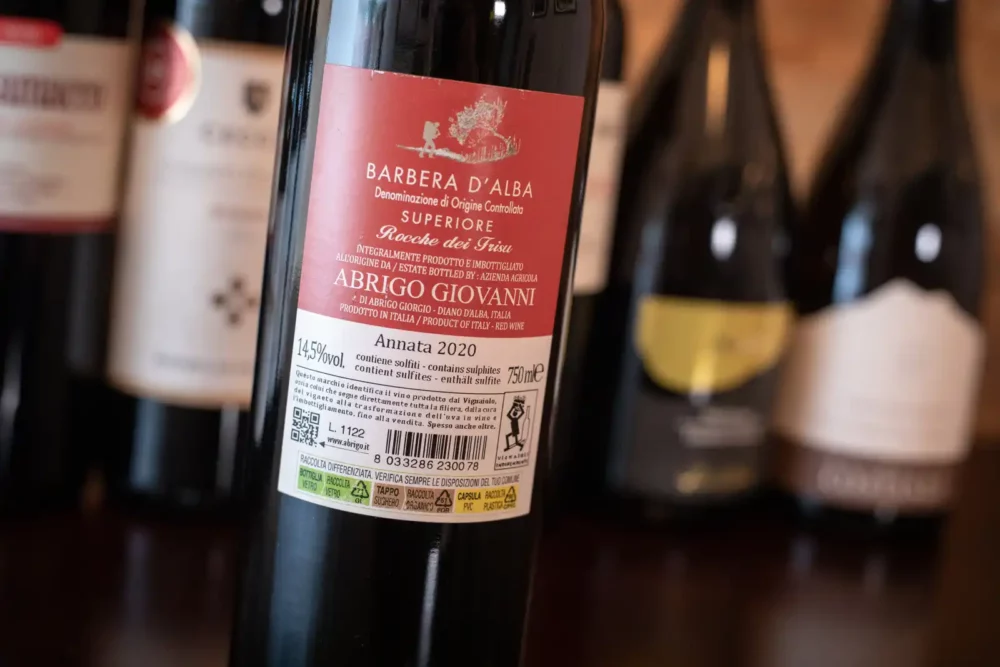
What does it mean? The wine’s components have either been strictly or loosely regulated.
Will I notice it in the glass? You should, but not always.
This is the most complicated one to explain, so bear with me.
As part of the European Union, Italy follows the Protected Designation of Origin (PDO) protocol for place-based naming of agricultural products. This helps consumers suss out imposters (in theory) and helps producers protect their reputation (in theory).
An example outside of wine that everyone is familiar with is Parmigiano-Reggiano DOP, a protected cheese that can only come from a specific region in Emilia-Romagna, and that can only be made following specific guidelines.
Well, the same thing goes for such famous wines of origin as Chianti Classico, Brunello di Montalcino, Barolo and Franciacorta. But it is not just about fame: there are more than 400 such place-based wine appellations in total across Italy.
Take a deep breath: while you might want to memorize some of these names for later, simply parsing the differences between DOC, DOCG and IGT can help frame your expectations.
DOC stands for Denominazione di Origine Controllata, and is often marked by a paper collar with light-blue trim on the neck. DOCG wines have a gold-trim collar, and it is the same acronym but with one word added: Denominazione di Origine Controllata Garantita. The third category, Indicazione Geografica Protetta (or IGP, sometimes IGT with Tipica taking the place of Protetta) is more broadly regulated designation, often on a regional level, such as Toscana IGP or Terre Siciliane IGP in Sicily.
In short, I see if this way:
- DOCG – More specific (i.e. regulated) wine tied to a more closely defined place.
- DOC – A specific wine tied to a specific place.
- IGT – A less specific wine tied to a broader area.
- VdT – Oh yeah! There is a fourth category: Vino da Tavola, or “table wine” … pretty much anything goes. (Though you don’t see too many of these in the U.S.)
I wrote about this extensively last year in my column, The Truth About Italy’s DOC and DOCG Wines, because I see a lot of misinformation online, at trade tastings, in restaurants and on wine shop floors, that DOCG is a guarantee of quality. It is more nuanced than that, and this shortcut for wine education is unhelpful to consumers. Furthermore, it has prompted many DOCs to clamor for DOCG status, rendering the “guarantee of quality” in the latter category meaningless. Feel free to dig in further if you want.
Riserva
What does it mean? The wine has been aged at the winery before release.
Will I notice it in the glass? Yes.
Riserva is a synonym for Reserve, although in Italy, this is a sanctioned word that can’t just be slapped on the label because the producer feels like charging a premium. The DOCs and DOCGs regulate this stringently, and it always means extended aging at the winery, often in wood, for a specific time period. IGP/IGT wines cannot even use the term by law.
Most times, Riserva connotes a more serious wine. Cheap and cheerful, refreshing and playful, these wines should not be. The assumption here is more structure and more aging potential.
Given the nature of Italian wines (even the whites) there is often a need for a little more aging “in the cellar” before the wine hits its prime. However, you will find Riserva used more often for red wines.
Vigna, Vigne or Vigneto
What does it mean? A single-vineyard wine.
Will I notice it in the glass? Not unless you are a connoisseur of the region.
These words mean the same thing in Italian: vineyard (vigne is the plural form). If you see it in the name of the wine on the label, you can be confident that the wine is likely a single-vineyard expression, and there is a good chance the price tag reflects that.
As with single-vineyard wines anywhere else in the world, vigna wines can provide profound pleasure … or they can be just another wine. It helps to have something to compare them too. That’s why in our First-Taste Guide series, I rarely if ever recommend them as a first taste of an appellation’s wines.
The best ones say something new and specific, either about a producer and their craft, that well-known appellation, or both. Because of their scarcity and prestige (rightly or wrongly earned) they cost more. Again, if you are new to an appellation’s wines, there are often better, more afforable starting points. File that wine away for later when you’ve fallen in love with the place.
Spumante, Satèn and Frizzante
What does it mean? Different degrees of bubbly intensity.
Will I notice it in the glass? Definitely.
I nearly excluded this one from the article just because you can tell the wine is sparkling by the shape of the bottle and closure. However, there are instances where Italian sparkling nomenclature should inform your buying decision.
- Spumante – While this essentially means sparkling, it comes with the assumption of fully sparkling. We are talking about 3.5 or higher bars of pressure, although often this is closer to 6 bars. Most Prosecco and traditional-method sparkling (i.e. metodo classico) wines will be in this territory.
- Satèn – This word pertains to the Franciacorta DOCG alone, and there aren’t many of them on the market. But I’m including it anyways because I am such a huge fan. Satèn means silky, and these sparkling wines clock in at 5 bars of pressure.
- Frizzante – This word means just as it almost sounds in English: fizzy. These are slightly sparkling wines, often made to emulate the more traditional farmer fizz of the past. They have a little lift, they like to play, and they are hardly ever serious. Example: many Lambrusco.
Amarone and Ripasso
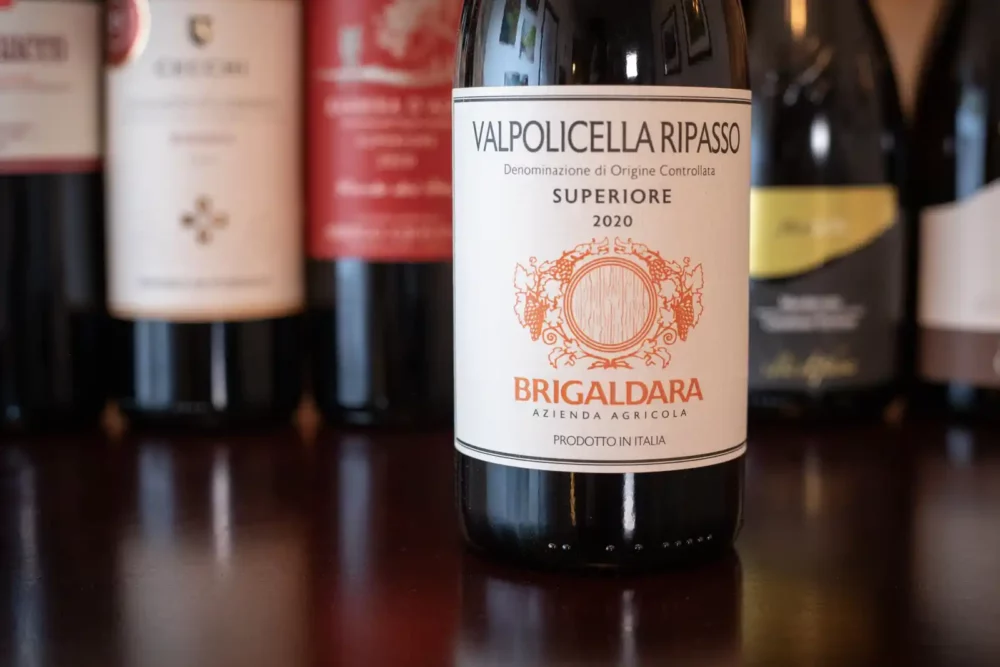
What does it mean? Two styles of red wine whereby air-dried grapes are used to make a dry wine — both of which are particular to the Valpolicella area of Veneto.
Will I notice it in the glass? Absolutely. The root of Amarone is amaro, or bitterness.
Because of their prevalence and popularity on the United States market — and the profound effect this technique has on the final wine — I am including Amarone and Ripasso as terms that ought to frame your expectation.
With an Amarone, the red grapes are allowed to air-dry for an extended period of time. They are then pressed, and the juice that remains is vinified into a dry wine that is highly concentrated, powerful and intense. This is a very complex process with a slim margin of air, and the minimum — I’m gonna say that again, the minimum — alcohol content is 14%, so they often clock in north of 15%.
Ripasso is a cousin of Amarone. A standard dry red wine is “passed through” the remnants of the Amarone process (thus the name) where it is allowed it to soak up some of the leftover phenols and compounds left in the raisined grape skins. Ripasso wines are not as intense, but they have distinct dried-fruit tones that standard Valpolicella wines do not.
Which one is better? That’s a matter of personal preference. In which case, there is only one way to find out.
Subscribe for more Italian wine content
Passito, Recioto, Vin Santo and Vendemmia Tardiva
What does it mean? The four most common terms used to describe sweet wines in Italy.
Will I notice it in the glass? Yes, you certainly will.
Since these are not hugely popular or visible in the United States market, I’ve placed them at the end of the list, but it is certainly a key term that represents some of the most unusual (to an American, that is) wines around.
- Passito – A wine made from partially dried grapes, which concentrates the sugars. Many sweet wine appellations bear this word in their name, like Passito di Pantelleria DOC.
- Recioto – Specifically used in Veneto, this term refers to sweet wines, often made in the passito method mentioned above. Since we just covered Amarone, it is good to know that Recioto della Valpolicella was the historic wine of the region, and Amarone was its accidental, dry-wine cousin.
- Vin Santo – Specifically used in Tuscany to refers to the sweet wines derived from air-dried white grapes. In Trentino, they make a sweet wine from Nosiola called Vino Santo.
- Vendemmia Tardiva – Italian for late-harvest, so a sweet wine made from grapes allowed to over-ripen on the vine. There are not many noble rot (muffa nobile) wines in Italy, and even fewer found on our shelves.
Merely Interesting Italian Wine Label Terms
Classico
What does it mean? A reference to the historic heart of a wine appellation. This does not mean a wine made in a classic, traditional style, unless it is the sparkling wine term metodo classico.
Will I notice it in the glass? On its own, classico will not tell you much. When paired with certain appellations, it can.
Two good examples: Chianti Classico and Soave Classico. In the former instance, we are talking about a stand-alone appellation; in the latter instance, a subzone within a broader appellation. But in both cases, we’re dealing with a wine that was grown in an area that has historically been devoted to vineyards and winemaking, and there was a reason for that — it was and still is, prime terroir!
So whether classico matters for quality is a case-by-case question. Certainly, some classico areas have better terroir and more winemaking lineage that can lead to better wines. But it is difficult to make that assumption on an Italy-wide level.
What you can count on? The wine comes from an area with a lot of great stories.
Superiore
What does it mean? This is another word sanctioned by DOCs and DOCGs that usually means the wine has reached a certain technical threshold, often for higher alcohol.
Will I notice it in the glass? Not likely. This does not mean a “superior wine.”
By modern standards, those thresholds are nothing unusual, particularly alcohol. (So the wine topped over 13%. M’kay.) However, superiore often comes with caveats for lower yields in the vineyard and even longer aging requirements. So the comparison of quality here is not from appellation to appellation, but rather within it. Put another way: these wines tend to be more serious, more complex versions than non-superiore wines from the same place.
Since these are often the wines that hit the export market sans their non-superiore cousins, this word won’t likely be influencing your buying decision.
I Have a Fun-to-Read Newsletter. Opt-In Here.
Two Italian Wine Label Hacks
I swore I would never use the phrase “hacks” on the pages of Opening a Bottle (we are a lot of things at Opening a Bottle; Buzzfeed is not one of them!).
But what else do you call these two items which didn’t fit neatly into my categories above? One is a single set of words that will often help you tell the difference between a producer name and an appellation. And the other is a logo whose very presence on the back label or capsule usually means “I’m buying this wine.”
And since you made it this far, you probably want to know that, right?
di, d’ and della
What does it mean? This is a preposition often defining the nature of the producer or more often linking the wine to its place of origin.
Will I notice it in the glass? Nope, but it will certainly help you read an Italian wine label.
I am probably the only writer who calls this a wine term, but you see this preposition a great deal, and once you commit it to memory, reading an Italian wine label becomes way easier.
Essentially, it is “of” or “of the,” depending on the specificity of the geography. (In Italian, since the proposition “of” ends in a vowel, the i is dropped when it precedes a noun beginning with a vowel). You might also see dello, degli or dei for “of the.”
How does this help you read an Italian wine label? Two ways.
First, is if it is used in the producer’s name. I mentioned these below as well, but Castello (castle); Abbazia (abbey); Fattoria (farm); Tenuta, Feudo or Villa (estate or domaine); Borgo (village); Ca’/Casa/Casale (house); Marchesi/Conte (noble family); Cantina (cellar) and Prodottori (producers/cooperative) are clues that you are looking at the producer name.
The second way is when it defines the wine and its place of origin. Some examples you might see:
- Rosso di Valtellina – Red wine of Valtellina.
- Lambrusco di Sorbara – Light red fizzy wine of Sorbara.
- Barbera d’Asti – Red wine from Barbera grapes of Asti.
- Amarone della Valpolicella – Dry red wine from air-dried grapes of the Valpolicella region.
Of course, a majority of appellations are just the place name, but this handy preposition will help you identify a fair percentage of them at first glance, especially once you are familiar with grape names.
Once you have this figured out, you’ll rarely confuse the appellation name with the producer.
Become a subscriber and gain complete access
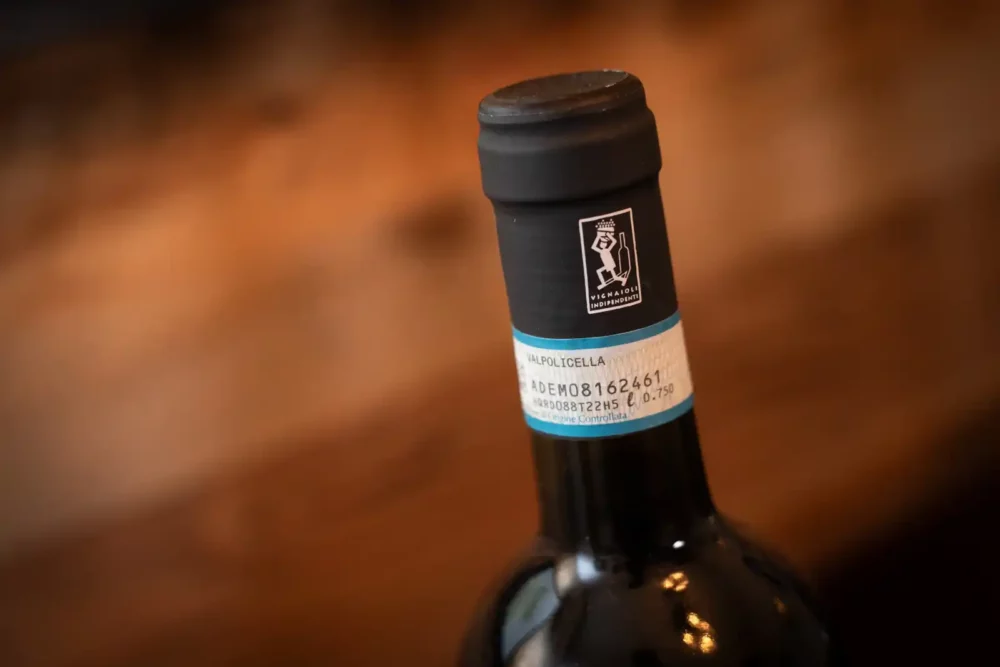
Vignaiolo Indipendenti (FIVI)
What does it mean? An independent winery with high standards.
Will I notice it in the glass? You’ll likely notice it is a high-quality wine, so let’s say “sure.” But Vignaiolo Indipendenti exist across the whole spectrum of Italian wine.
This one is a matter of personal opinion, but I’ll be damned if it isn’t one of the most reliable indicators of quality in Italian wine.
The Federazione Italiana Vignaioli Indipendenti (or FIVI for short) is a trade organization representing more than 1,600 independent winegrowers across Italy. To qualify, the producers must be independently owned and operated, and they must grow their own grapes and make their own wine. That alone doesn’t guarantee quality, but the ethos of the organization and what it prizes in wine (distinctiveness through terroir) informs the policies they push for at the governmental level. This in turn has attracted many of the country’s most thoughtful producers.
Members often display the logo on the back or on the neck, and that logo on the capsule has often meant a great wine inside for me.
All Italian Wine Label Terms (A to Z)
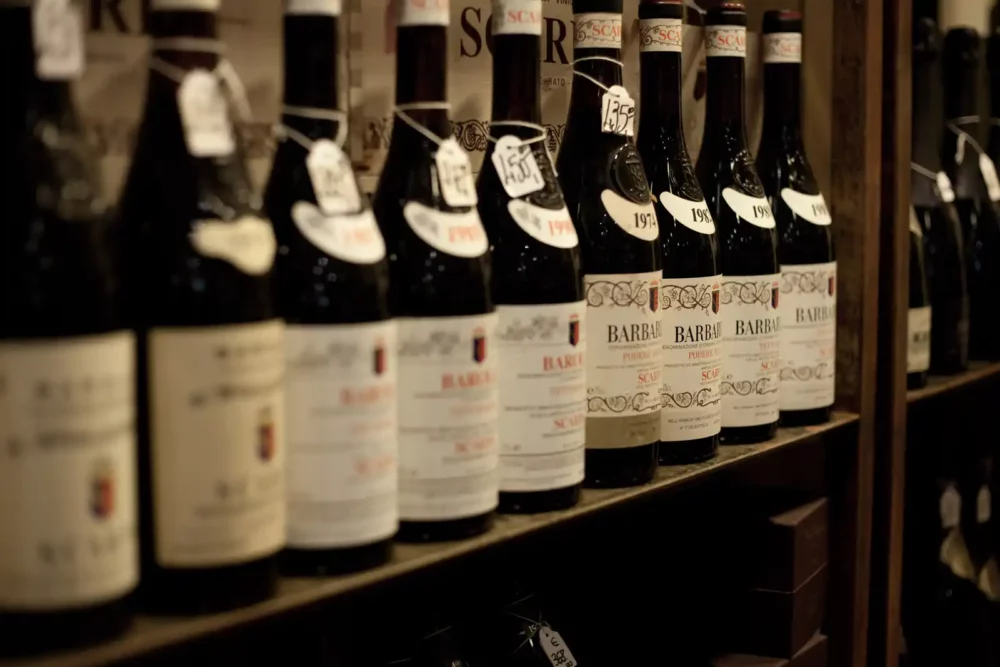
Pardon the repeats from above, but here is the full list of wine terms you might see on an Italian wine label.
- Abbazia – Abbey
- Amarone – A dry red wine made from air-dried grapes particular to Valpolicella in Veneto. Learn more.
- Annata – Annual, or vintage
- Azienda Agricola – Essentially, an Italian way of saying a “for-profit farm.” That’s it.
- Bianco – White wine, often a blended white wine. Learn more.
- Borgo – Village
- Bricco or Bric – Hill (particularly in Piedmont)
- Ca’/Casa/Casale – House
- Cantina – Cellar or Winery
- Castello or Castelli – Castle or castles
- Cerasuolo – A reference to cherries, either in color or taste, which is only found in two very different wines from two very different places: a rosé from Abruzzo and a Nero d’Avola-Frappato blended red from Sicily (Cerasuolo di Vittoria).
- Chiaretto – Essentially “pale.” A rosé from the Lake Garda area. There is an interesting story behind this endearing term, courtesy of writer Meg Maker.
- Classico – The historic heart of a wine region. On its own, typically not a reference to winemaking technique unless paired with metodo (see below). Learn more.
- Consorzio – The Italian word for a consortium, used in reference to the governing body of an appellation of protected origin. See DOC and DOCG above.
- Col Fondo – A non-disgorged sparkling wine typical in Veneto and Friuli.
- Colli – Hills (particularly in Northern and Central Italy)
- Conte – Count (noble)
- d’, di, dei, della, dello, degli – “Of” or “of the.” Learn more.
- Denominazione di Origine Controllata (DOC) – A controlled wine appellation of origin. Learn more.
- Denominazione di Origine Controllata Garantita (DOCG) – A more stringent, more specific controlled appellation of wine origin. Learn more.
- Fattoria – Farm
- Feudo – Estate (particularly in Sicily)
- Frizzante – Lightly sparkling. “Fizzy.” Learn more.
- Indicazione Geografica Protetta (IGP) – A loosely regulated wine from within a broader, less specific wine region. See also IGT below. Learn more.
- Indicazione Geografica Tipica (IGT) – Another way of labeling IGP. Learn more.
- Marchesi – Marquis (noble)
- Metodo Classico – The traditional method of making sparkling wine. Secondary fermentation occurs in the bottle.
- Metodo Martinotti – A method of making sparkling wine where the secondary fermentation occurs in a tank.
- Millesimato – Vintage (specifically used for sparkling wines).
- Passito – A sweet wine made from air-dried grapes. Learn more.
- Podere – Farm
- Poggio / Poggi – Hills (particularly in Tuscany)
- Prodottori – Producers (cooperative)
- Rosato – Rosé wine. Learn more.
- Rosso – Red wine; often a red blend, but not always. Learn more.
- Recioto – A sweet wine made in the passito method typical to the area around Verona in Veneto. Learn more.
- Ripasso – A dry red wine made from passing the wine through dried Amarone grapes, particular to Valpolicella in Veneto. Learn more.
- Riserva – A wine that has been aged before release, often from a select parcel or cuvée. Learn more.
- Rocca or Rocche – Rock or rocks
- Satèn – A style of Franciacorta sparkling wine with less bars of pressure. Learn more.
- Spumante – A fully sparkling wine. Learn more.
- Superiore – Designation for wines that meet higher minimum standards for alcohol or lower minimum standards for yield. Learn more.
- Tenuta – Estate or domaine
- Terra or Terre – Land or lands
- Torre – Tower
- Val or Valle – Valley
- Vecchia or Vecchie – Old. E.g. Vecchia vigna (old vine) or vecchie vigne (old vines)
- Vendemmia – Harvest or vintage
- Vendemmia Tardiva – A late-harvest sweet wine. Learn more.
- Vigna, Vigne or Vigneto – Vineyard, often used to indicate a single vineyard wine. Learn more.
- Villa – Estate
- Vino – Wine (may as well include at this point, right?)
- Vin Santo or Vino Santo – A sweet wine made air-dried grapes from either Tuscany or Trentino. Learn more.
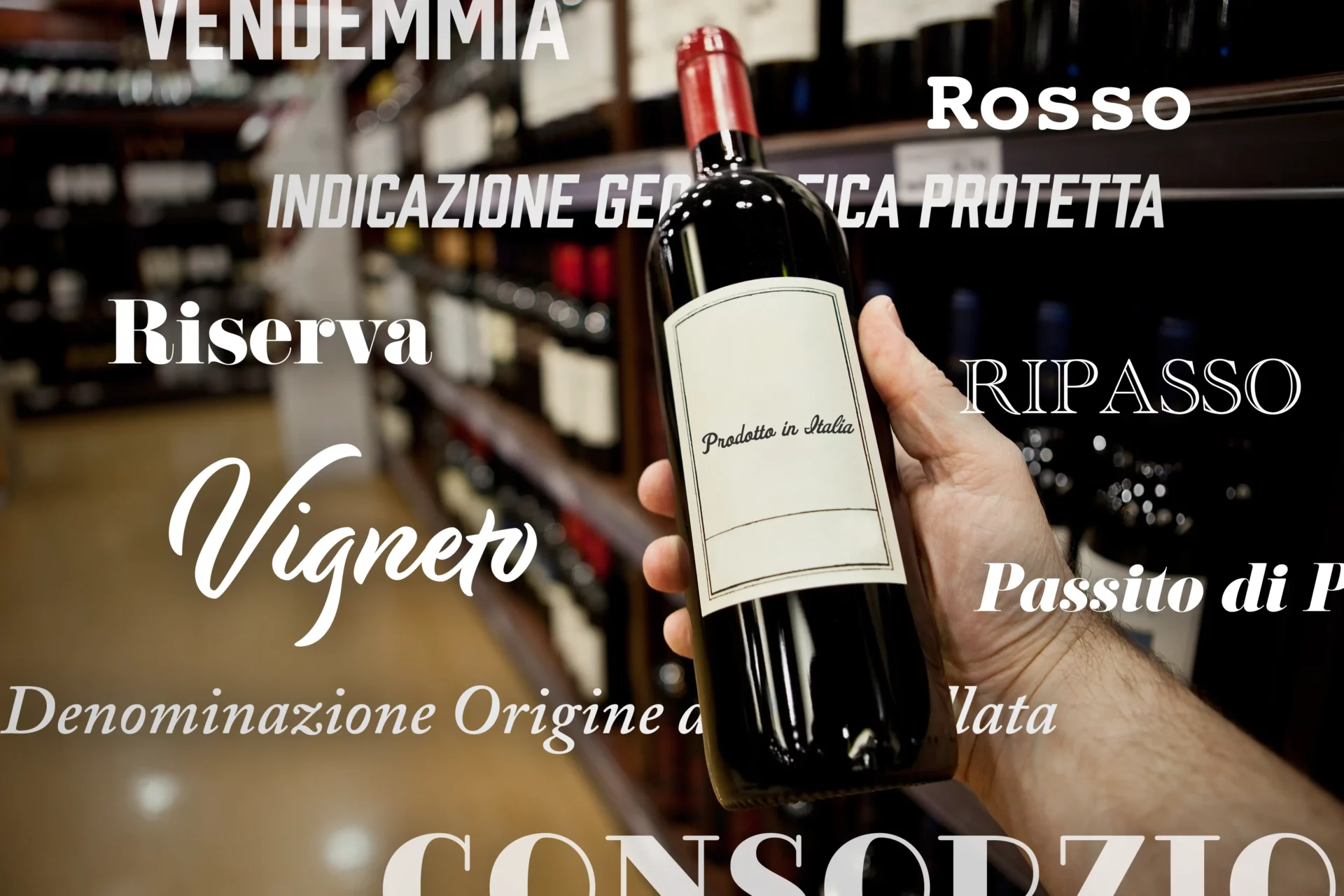
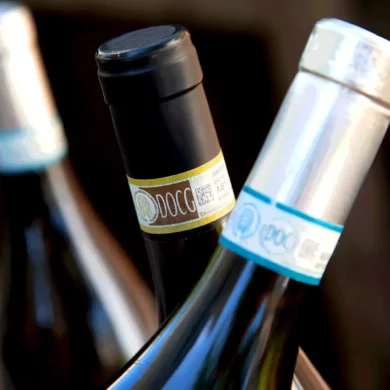
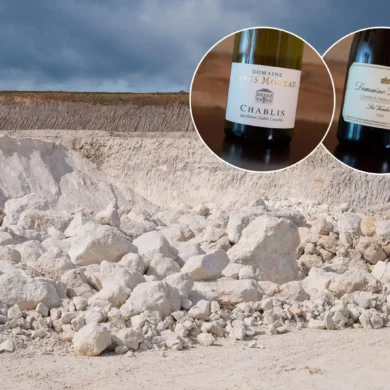
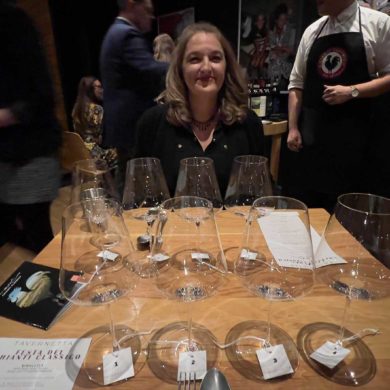
Impressive, immensely useful, and great! Love that you double down on the DOCG issue. Great post!
Thank you Jeremy. There are so many guides like this to Italian terms, but I wanted to do something that said “hey, this one term is useful this way, that term not so much.” But as you know: this country’s wine laws have more wrinkles than the landscape. It was tough. I appreciate your comment and encouragement. Cheers.